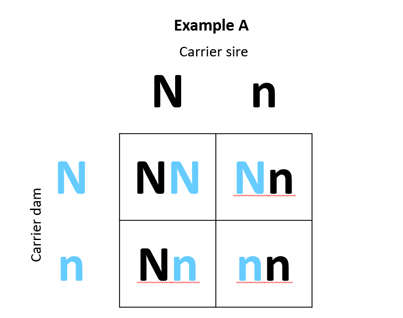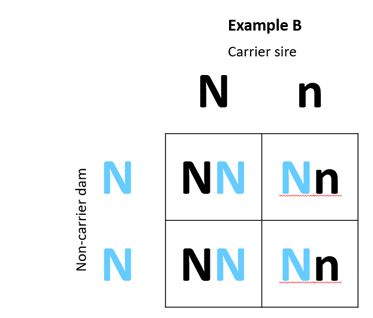Genetic Conditions
Known as “Curly Calf Syndrome,” AM results in stillborn calves small in size with diminished muscling, bent limbs, and twisted spines.
Recessive, lethal, affecting Angus and Angus-influenced cattle.
A genetic mutation is a change in the genetic code from what previously existed. While some genetic mutations are advantageous (polled, for example), the majority of mutations in nature tend to hinder a population’s success via harmful or lethal means. Mutations of this nature are often referred to as genetic conditions or genetic defects.
Dominant mutations always influence an animal’s phenotype so the mutation can easily be selected for or against. Recessive mutations, however, tend to exist in a population even when harmful to the point of being lethal. This is because animals can carry the recessive gene without showing any signs of it. When carrier animals are mated to other carriers, the resulting offspring have a chance of showing symptoms. Fortunately, technology has evolved to the point at which animals that appear normal yet are carriers of recessive genetic conditions can be identified if a DNA test exists for that mutation.
A 2 x 2 Punnett Square can be used to illustrate the outcomes of various matings. In Example A below, we have mated a carrier sire to a carrier dam, while in Example B we have mated a carrier sire to a non-carrier dam.


